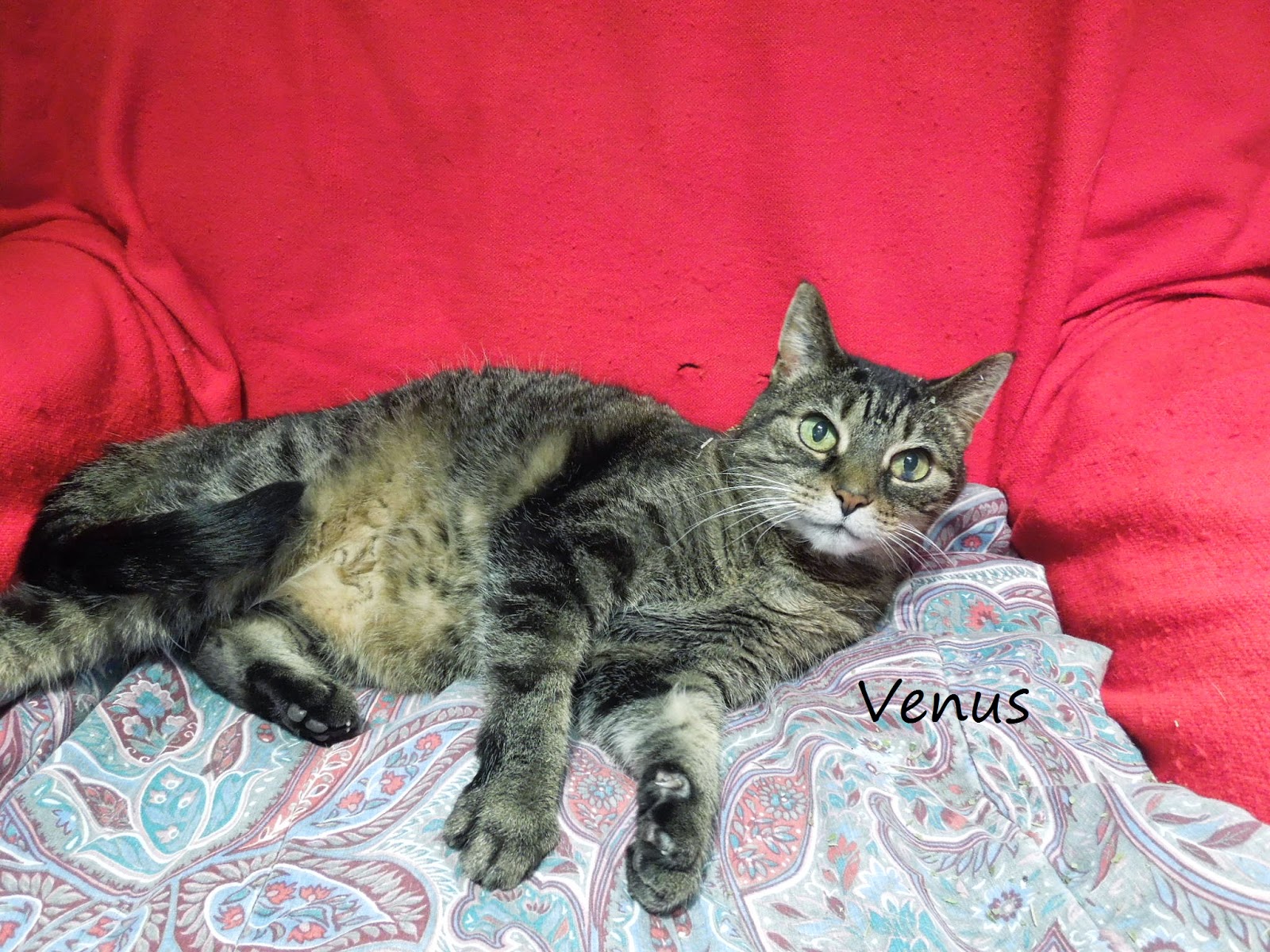Here we are, more than halfway through January – and we still have a few RAPS calendars on hand. This is just an online reminder of some of the furry faces who should be watching over your doings, and those of your friends and family, in the coming year…
The lovely face on the front cover is that of Henrik, one of the pair we call the Sedins. Their names were actually Ethan and Simba when they came in, but this suits them much better. Poor Henrik got very matted at one point last year, and had to be taken in to the vet for what ended up looking like a lion cut.
He was not impressed! The cat that we had all assumed was mostly fuzz turned out to be a very solid body under all the covering. These days he has a good bit more fur!
Tilty head
Babylon (January) is one of the cats who has suffered from vestibular disease, which affects the inner ear. For some time the cat staggers round as if drunk, and is usually confined to the bottom of a cage lined with blankets so that falling is safe. Sometimes cats recover well, sometimes the head-tilt remains.
Babylon, interestingly, is able to straighten up, but also turns his head way round, like an owl! He also demonstrates one of the side-benefits of this scary illness – he’s much more comfortable with being handled by volunteers, and welcomes attention.
March and April give us two of the loners –
Timmy and
Leland are not happy campers, surrounded by so many other cats, but at least at the Sanctuary they are able to find some space to themselves; if we took them to No 5 Rd for adoption, they would have a very hard time in even closer proximity to other felines. Both cats love human attention, and might do well in a cat-savvy, single-cat household.
It was only after our pictures for the calendar were chosen that I realised that the
Val family had yet again stolen the spotlight.
The picture of
Latte sunning herself is a mirror image of that of her brother Silverfox, usually known as
Foxy, in the 2013 calendar.
What can I say? – they’re great-looking cats!
Miss November is
Autumn – and our little once-feral girl with the blonde highlights is beginning to get very brave – from a wary and hissy cat who avoided people at all costs
she has become one of the greeting crowd – especially if there aren’t too many other cats around, and she can get some attention.
There are still a few calendars left, and we’re discounting them now we’re halfway into January. Please pass the word, and if you want a copy, contact the Shelter at 604-275-2036, or contact me at
brigid@uniserve.com
Blog by Brigid Coult
Photos from calendar by Michele Wright and Henley Chiu
photo of Autumn hiding by Phaedra Hardman






























